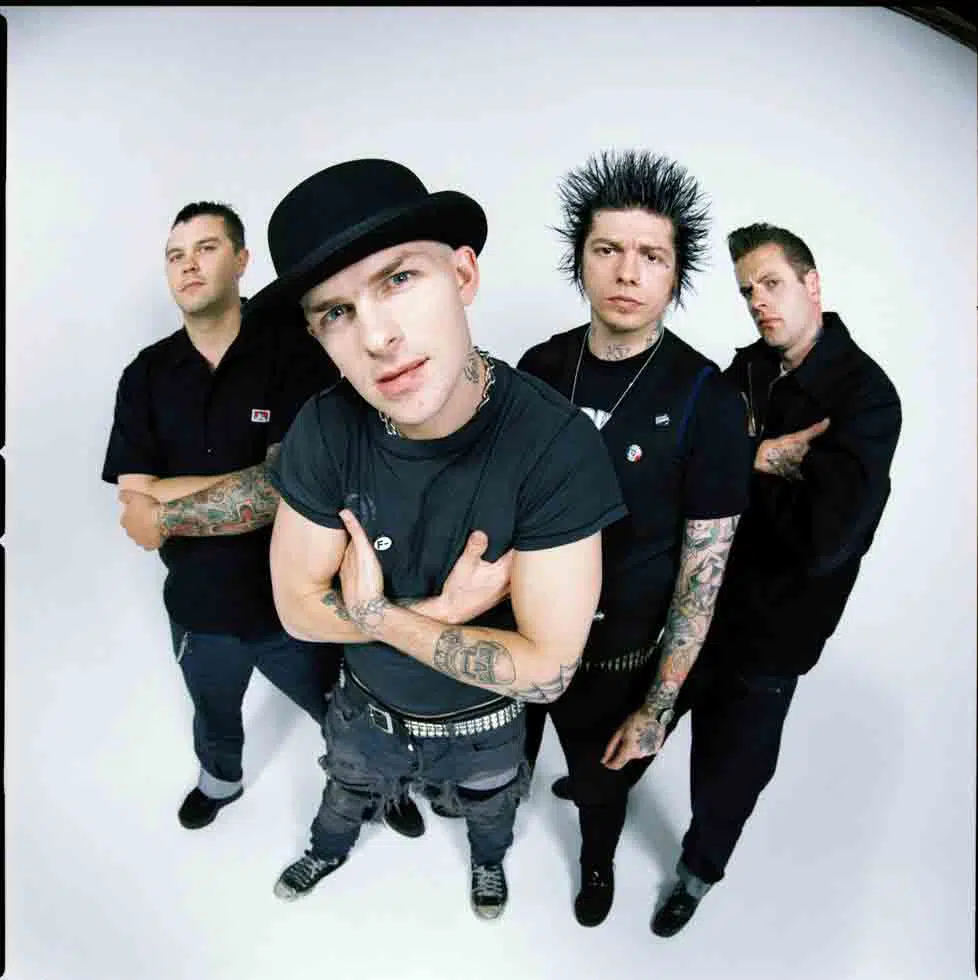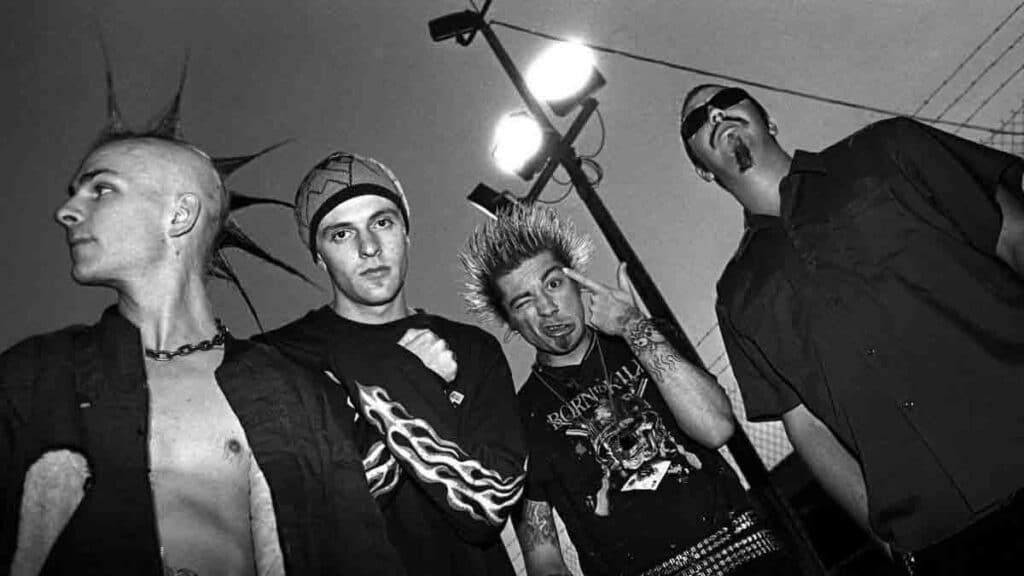Rancid is a punk rock band from California. The team appeared in 1991. Rancid is considered one of the most prominent representatives of 90s punk rock. Already the second album of the group led to popularity. The members of the group have never relied on commercial success, but have always strived for independence in creativity.
The background of the appearance of the Rancid team
The basis of the musical group Rancid are Tim Armstrong and Matt Freeman. The guys come from the town of Albeni, near Berkeley, USA. They lived close to each other, had known each other since childhood, studied together. From an early age, friends became interested in music. The guys were attracted not by the classics, but by punk and hardrock. Teenagers were carried away by the music of the Oi! movement groups. In 1987, the guys initiated the creation of their own musical group.
Their first brainchild was the group Operation Ivy. The band was successfully complemented by drummer Dave Mello and lead vocalist Jesse Michaels. Here the young guys got their first experience. The purpose of the work of the team was not a commercial interest. Friends created music at the behest of the soul. In 1989, Operation Ivy outlived its usefulness by ceasing to exist.
Further Creative Search for Rancid Leaders
After the collapse of Operation, Ivy Armstrong and Freeman began to think about their further creative development. Friends were part of the ska-punk band Dance Hall Crashers for a while. The creative couple also tried their hand at Downfall. Neither option was satisfying with what they were doing.
During the day, friends were forced to work, providing food for themselves, and rehearsals took place in the evenings. Music as a hobby became a burden for the guys, they wanted to be creative in full force. Friends dreamed of creating their own team. At some stage in my life, it was decided to give up my day job, to completely immerse myself in creativity and the serious development of my own group.
The emergence of the band Rancid
Like many creative people, Tim Armstrong became addicted to alcohol early. Creative searches, the inability to fully devote oneself to one's favorite business brought the situation to a serious dependence. The young man had to be treated for alcoholism. Matt Freeman supported a friend. It was he who suggested taking up music seriously by founding Rancid. It happened in 1991. Additionally, drummer Brett Reed entered the band. He shared an apartment with Tim Armstrong and was well acquainted with his new colleagues.
The first creative and commercial successes of the team
Deciding to devote themselves entirely to creativity, the guys set to work with enthusiasm. It took only a few months of intense training and repertoire to prepare for serious performances in front of the public. The band quickly set up a touring program around Berkeley and the surrounding area.

As a result, Rancid gained some notoriety in its area. Thanks to this, in 1992, a small recording studio agreed to publish the band's EP record. The debut mini-album included only 5 songs. The guys did not pin commercial hopes on this edition.
With the recorded material, the members of Rancid hoped to attract more established agents. They soon succeeded. Brett Gurewitz, who represented Epitaph Records, drew attention to the band. They signed a contract with Rancid, which did not burden the guys in terms of creativity.
The beginning of serious work
Now, when evaluating the contribution of Rancid to the history of music, many argue that the group is similar to the Clash replica. The guys themselves talk about trying to revive the British punk of the 70s, passing it through their own energy and talent. In 1993, Rancid recorded their debut album, the title of which repeated the band's name.
Aiming at serious work and development, the guys invited a second guitarist. At one of the concerts they were assisted by Billie Joe Armstrong, the leader of the band Green Day. But his permanent move to Rancid was out of the question. The guys tried to poach Lars Frederiksen, who played in Slip, but he did not leave his band until it broke up. With the addition of the long-awaited fourth member, Rancid embarked on a concert tour of the United States and then toured European cities.
Group business card
In 1994, Rancid recorded a record for the first time in full force. It was an EP album. The team made this record for the soul, and not for the sake of commercial interest. The next starting point for the band was a full-fledged compilation. The album "Let's Go" was released at the end of the year and became a real hallmark of the band. It is in this work that the maximum power and pressure of real punk is felt, and traces of the London origins of the direction can be traced.
The silent fight for Rancid
The work of Rancid was appreciated on MTV, the band's second album received a gold, and later a platinum certificate. The group suddenly became successful and in demand. There was a tacit struggle for the team between representatives of the recording industry. Maverick (Madonna's label), Epic Records (representatives of Clash in America) and other "sharks" of the direction tried to get a group playing a fashionable revived punk. Rancid decided not to change anything, cherishing their creative freedom. She remained under their current contract with Epitaph Records.
New creative breakthrough
In 1995, Rancid released their third studio album "...And Out Come the Wolves", which is considered a definite breakthrough in the work of the guys. He appeared not only in the American charts, but also in the ratings of Australia, Canada, Finland and other countries. After that, the band's songs were willingly played on the radio and broadcast on MTV.
The album peaked at number 35 on the Billboard 200, surpassing 1 million copies sold. After that, Rancid played a big tour and took a break from their activities. Freeman at this time managed to participate in the composition of Auntie Christ, and the rest of the group focused on the work of the newly created own label.

Resumption of work, new sound
In 1998, Rancid returned with a new album, Life Won't Wait. It's a carefully crafted compilation with many guest artists, with a ska twist. The guys wrote the fifth album "Rancid" with a completely different bias. It was clearly hardcore, which the fans greeted coldly. Having completely failed sales, the guys decided to interrupt the work of the group again.
Another return to creativity
In 2003, Rancid again delighted fans with the new album "Indestructible". This record was recorded in a classic manner for the band. Getting number 15 on the Billboard 200 says a lot. In 2004, in support of their work, the team worked out a world tour. The band's next album, Let the Dominoes Fall, was released in 2009. The guys here again adhered to their traditions, but additionally deviated into the acoustic sound. By analogy, compilations were recorded by the group in 2014 and 2017.



